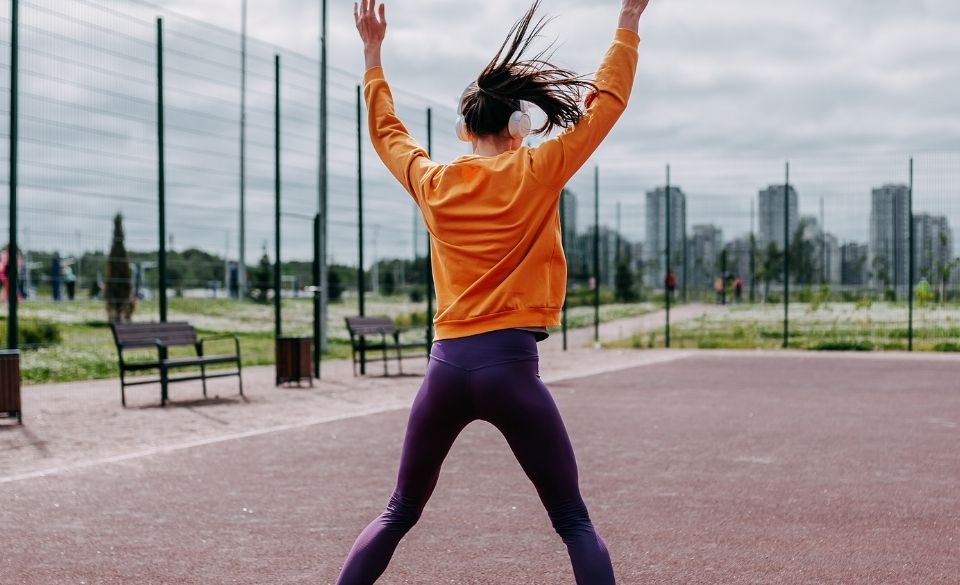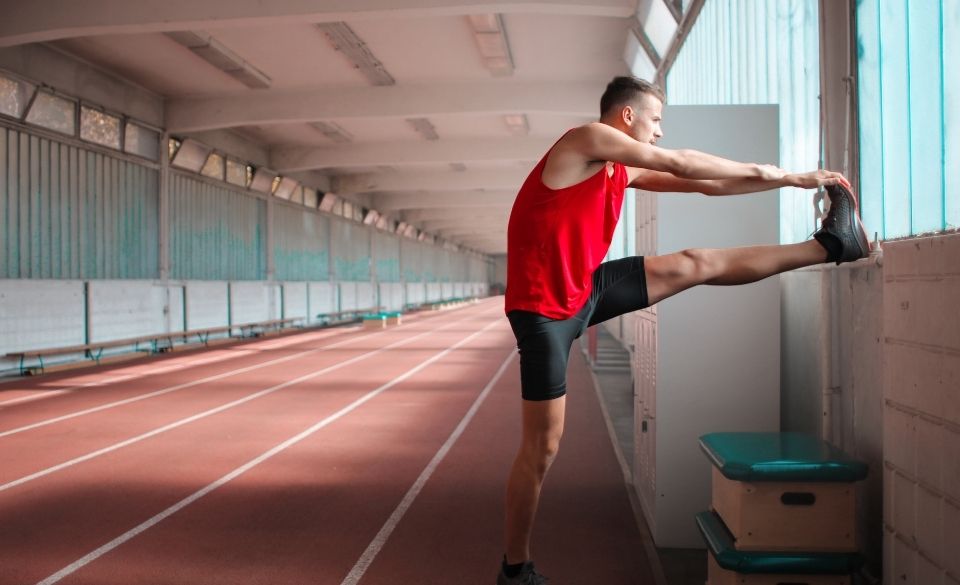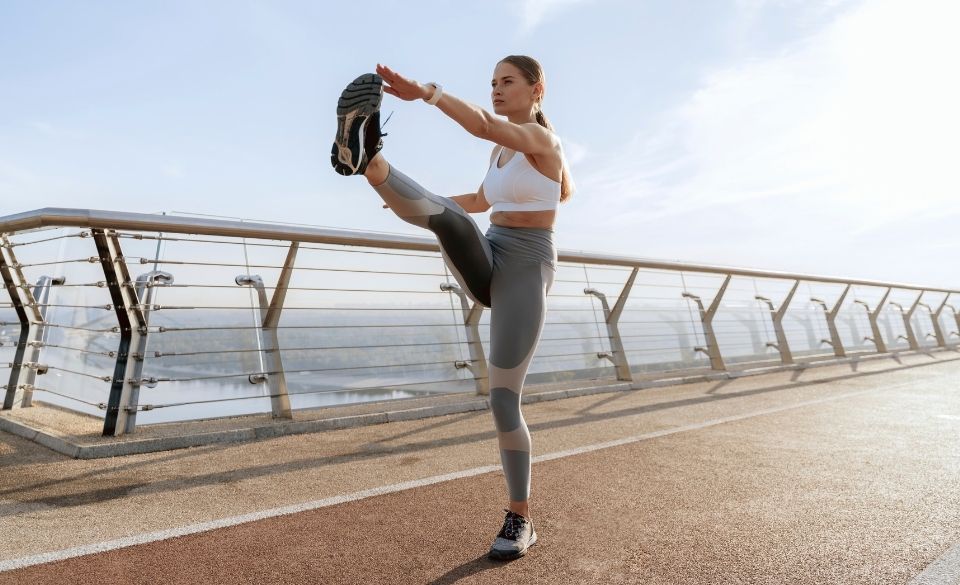
What Is Ballistic Stretching? Examples, Benefits & More – UPDATED 2022
Page Contents
Many people know stretching provides benefits before and after exercise. However, there are many different ways to stretch our muscles. This includes static stretching, dynamic stretching, and ballistic stretching.
Most people have heard of the first two forms of stretching (static stretching and dynamic stretching). However not ballistic stretching, which is the lesser-known one. So, what is ballistic stretching? And how can it benefit you?
Ballistic stretching is a stretch that involves fast and sudden movements. In this article, we answer the question – “what is ballistic stretching”. We also provide some basic examples of ballistic stretching to get you started. So, keep reading if you want to learn more.
What is Ballistic Stretching? A Complete Guide
Ballistic stretching is not just about stretching the muscles like stretching as you know it. Instead, it requires you to extend and force the body and muscles past their range of motion. This is done by bouncing and then using your momentum to hyperextend the body.
Sports such as basketball, running, soccer and tennis are all forms of sports that require stretching before exercising. This ends up helping the athlete to improve flexibility, mobility, and power before exercise.
However, there are some red flags when it comes to ballistic stretching.
One study found that ballistic stretching may be dangerous for an average person. Even though ballistic stretching is widely used in ballet in other sports it can cause weakness in the hamstring and the possibility of muscle injuries. the study also found that long durations of ballistic stretching can cause the hamstring and quadriceps to be imbalanced.
Other studies have found that this form of stretching is less beneficial than static stretching. They found that static stretching is more likely to promote hamstring and quadricep flexibility than ballistic stretching.
Since static stretching has been shown to delay the onset of muscle soreness, it is not surprising many athletes choose this form of stretching instead.
Generally, ballistic stretching is more dangerous for non-athletes. Numerous studies have concluded that this form of stretching may cause muscle weakness, tendon tears, and injuries. So, if you are a runner, cyclist, football player, or in another sport other than ballet, perform static stretching instead.

Ballistic Stretching Definition
Ballistic stretching is classed as dynamic or passive stretching, which requires the person to stretch in a bouncing motion. The stretch then forces the limb into an extended range beyond its capability. That means this form of stretching requires you to attempt to stretch the muscles beyond their normal range of motion.
Because of this, the stretch involves sudden or bouncing movements at the end of the stretch, to pass its natural range of motion. However, it is important for an athlete performing this type of stretch to know their limitation.

Ballistic Stretching Examples
Now you know what ballistic stretching is here are a few examples to help you get started.
Standing Lunge
The standing lunge is a stretch that can be varied based on other stretching methods. This form of stretch helps loosen and improve the flexibility of the glutes and quadriceps.
To perform this stretch, start by standing up straight. Then place a foot forward with your arms at your side. Now bend the knee and plummet forward. This should be done in a fast and controlled manner. Your weight should be located on the front foot and controlled by the heel. Then return to a standing position by pushing off from the front heel, and then continue the pose with the other leg.
Standing bounce
Another widely popular ballistic exercise is the standing bounce. Start by standing up tall with your hands at your side. Then move onto the balls of your feet. Start bouncing on the forefoot in a short and fast motion.
Side Arm Swing
One of the easiest ballistic exercises you can do. Start by standing up with both legs slightly bent. Move your legs so they are hip-width apart. Then swing both arms on the side and then cross them at the front.
Chest
To improve your chest muscle’s flexibility, start by standing in an upright position. Place both arms at your side and straighten them. Then turn your palms towards the roof and flex your elbows slightly. Now flex the shoulders so you can move the arms behind you repeatedly.
Leg Swings
One of the most popular ballistic stretching for runners, the leg swing involves a fast swinging movement of the leg. Start by standing sideways next to a wall and place your right palm onto the wall. Then shift your body weight onto the left leg and swing the right leg forward and backward, speeding it up in the process. Do this 5-10 times before switching legs.
Benefits of Ballistic Stretching
Even though many studies show that the benefits of ballistic stretching can be detrimental some benefits can’t be ignored. However, it is widely recommended you do your research before starting this form of stretching, as there are mixed recommendations based on the studies you read online.
Some of the benefits of ballistic stretching include:
– Stretches the muscles further than standard stretching techniques.
– Improves tendon elasticity
– Less discomfort than standard stretching (static)
– Increases blood circulation
However, it is important to know if you are recovering from an injury that this form of stretching can cause more harm than good. When you are recovering from an injury you are better off using static stretching techniques to improve the elasticity of the muscles. Otherwise, ballistic stretching can harm muscles, tendons, and ligaments.
Conclusion
Ballistic stretching is a great way to increase muscle power and range of motion. However, for the inexperienced athlete, it poses more risk than reward. So if you are looking at introducing this type of stretching into your warm-up routine, have a professional check your movements. Also, make sure you know your limitations so you don’t overstretch the muscles and tendons too much.


